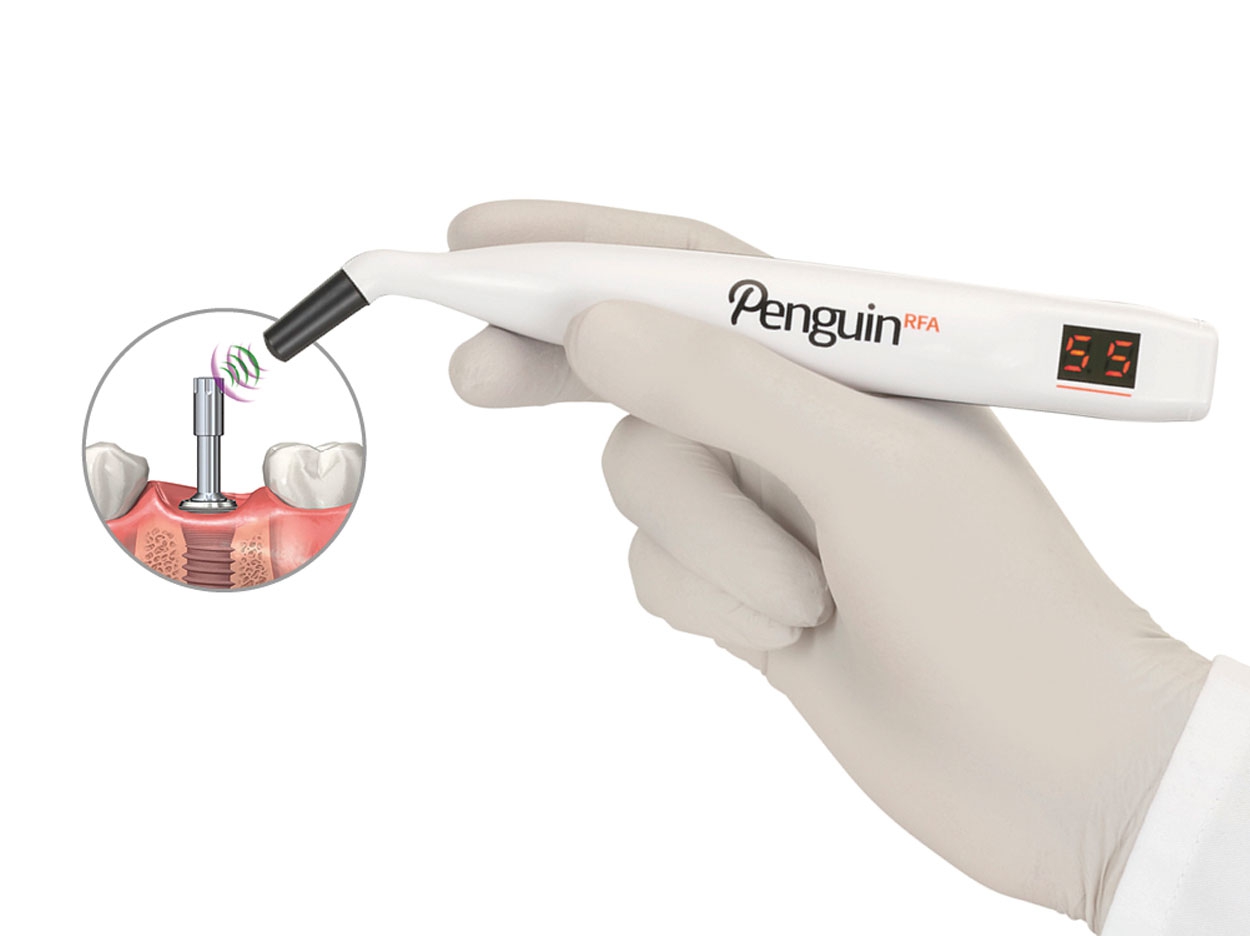
When a patient presents to your dental practice with questionable and/or non-restorable teeth requiring extraction, the biggest concern is whether implants can be placed during the same surgical visit. There are several factors to consider when placing dental implants immediately into extraction sites. These include, but are not limited to, the quality and quantity of bone, the presence of infection, and the patient’s health. Here is a case that demonstrates the use of the Penguin RFA Implant Stability Monitor (Integrated Diagnostics/Aseptico) to aid in the decision-making process.
A patient presented to my practice wanting to restore his lower dentition to proper form and function. He complained of generalized discomfort in these teeth due to the gross caries and periodontal disease that was readily apparent (Figure 1). The patient desired having lower fixed restorations supported by dental implants.
A CBCT scan was taken to accurately capture the information needed to properly treatment plan this case. To further develop a treatment plan, diagnostic model impressions were taken, poured up, and forwarded to the dental lab. These models were then mounted on an articulator for further analysis to meet the patient’s aesthetic and functional needs.
Once the teeth were extracted, the tissue was reflected in order to get the surgical guide seated and fixed with their respective retention pins. Using this universal surgical guide (3D Diagnostix), the sites for the implants were initiated with a designated 1.8-mm pilot drill from the OCO Biomedical Guided Kit utilizing the Mont Blanc surgical handpiece and Aseptico surgical motor (AEU 7000) at a speed of 1,200 rpm with copious amounts of sterile saline. Sequential osteotomy formers from the OCO Biomedical Guided Kit were then used to shape the final osteotomies. Once the osteotomies were complete, an implant driver was used to place 8 Engage (OCO Biomedical) dental implants.
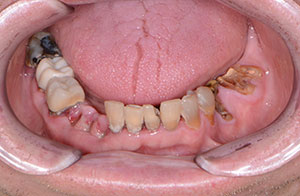 |
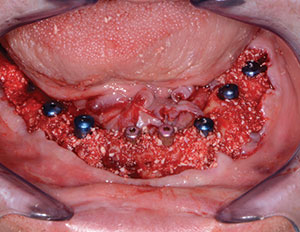 |
| Figure 1. Preoperative view of the mandibular arch. | Figure 2. Placement of dental implants and grafting material. |
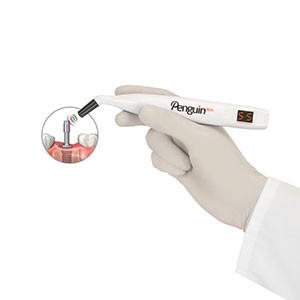 |
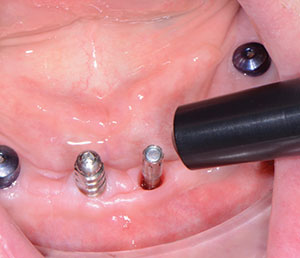 |
| Figure 3. Penguin RFA Implant Stability Monitor (Integrated Diagnostics/Aseptico). | Figure 4. Placement of the MulTiPeg on healed sites. |
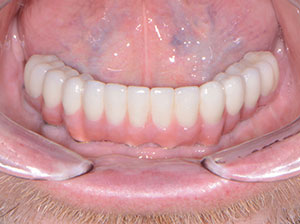 |
| Figure 5. Final restorations. Final restorations. |
A baseline Implant Stability Quotient (ISQ) reading was taken of these implants utilizing the Penguin RFA Implant Stability Monitor unit. This device measures the resonance frequency of the reusable MulTipeg with a non-contacting technique. The frequency is displayed as an ISQ value ranging from 1 to 99. The ISQ value correlates strongly to the micro mobility of the implant.
Due to the quality and quantity of bone, the initial readings were not favorable for immediate loading. Any residual areas around the implants or in the sockets were grafted with cortical mineralized and demineralized bone-grafting materials to optimize the area for regeneration (Figure 2). Primary closure was achieved by suturing the tissue with resorbable sutures.
Approximately 8 to 9 weeks after implant placement, the patient returned for the final prosthetic phase of his treatment. The gingival tissue around the implants was very healthy, so the extended healing caps were removed, and the implants were evaluated. Each implant was tested with the Penguin RFA Implant Stability Monitor (Figure 3) by placing the reusable MulTipeg (Figure 4) on it. This time, the readings captured with the Penguin RFA Implant Stability Monitor were most favorable for loading, indicating ideal stability and osseointegration.
Since all these dental implants were well integrated, impression posts were placed and tightened. Using a stock impression tray, a full-arch impression was captured using a fast-set polyvinylsiloxane material and forwarded to the dental laboratory for fabrication of customized abutments (Figure 5) and provisional restorations.
More and more patients are presenting to dental practices requesting immediate dental implant placement and restorations at the time of extraction. Having a precise and objective manner to monitor osseointegration as well as determine whether or not to immediately load provides the dental practitioner a predictable and successful treatment outcome.
For more information, call Aseptico at (800) 244-2954 or visit aseptico.com.
Dr. Nazarian maintains a private practice in Troy, Mich, with an emphasis on comprehensive and restorative care. He is a Diplomate in the International Congress of Oral Implantologists. He has conducted lectures and hands-on workshops on aesthetic materials, grafting, and dental implants throughout the United States, Europe, New Zealand, and Australia.












